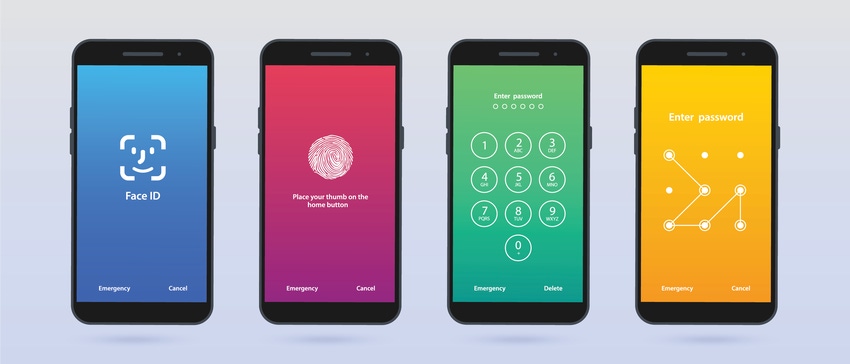
News, news analysis, and commentary on the latest trends in cybersecurity technology.
Using WebAuthn, physical keys, and biometrics, organizations can adopt more advanced passwordless MFA and true passwordless systems. (Part 2 of 2)

The first article of this two-part series examined ways to improve multifactor authentication (MFA) and boost adoption. This story takes a look at how organizations can adopt more advanced passwordless MFA and true passwordless systems.
Getting to passwordless won't be easy, but the concept is finally gaining momentum. Although several vendors have offered passwordless MFA and true passwordless technology for a few years — mostly relegated to enterprise use — a more comprehensive framework is now taking shape. Apple, Google, and Microsoft have jointly agreed to adopt passwordless in earnest.
For example, Apple will be introducing Passkeys, which completely replace passwords used to log into websites, in a few months. The framework, based on the FIDO Alliance standard, uses biometrics such as Face ID to generate a unique, encrypted digital key that resides only on the device and within an encrypted keychain used for other Apple devices, including the iPhone, iPad, Mac, and Apple TV. This makes it impervious to phishing and other forms of data extraction.
In 2020, Microsoft turned to biometrics for authentication in Windows 10 and Windows 365 — and the company is also expanding passwordless to websites. In addition, all three companies are adding the ability to transfer this identity data across authenticated devices and systems. In the past, changing phones or other devices typically meant reinstalling credentials — a time-consuming and irritating task.
In addition to building biometrics and other security mechanisms into their operating systems, the Big Three are introducing software development kits (SDKs) that companies can use to build passwordless websites. As a result, it will soon be possible for consumers to begin ditching passwords for compliant sites and services. Like Apple's Passkey, a mobile phone or other registered device authenticates the person and then sends the request to the server without sending the biometric data.
"Where the big vendors lead, everyone else follows," says Don Tait, a senior analyst for Omdia.
At the heart of this transformation is the FIDO Alliance. "It is a classic example of the impact of consumerization on technology," adds Rik Turner, a senior analyst at Omdia. "As people begin to use tools in their private lives, they begin to seep into the workplace."
A Matter of Identity
Security experts say that the first step in building a better authentication framework is to stop using outdated methods like secret words and one-time codes to verify users. Even push apps are vulnerable to exploits. For example, crooks who gain access to a company's network or an MFA system can generate fake authentication requests that someone might authorize in a moment of distraction or inattentiveness.
Even highly secure YubiKeys and other U2F tokens aren't exempt from vulnerabilities and workarounds. For example, if a user forgets the key or can't use it for some reason, the typical workaround is to revert to a text code or less secure form of MFA as the backup. At that point, even an ultra-secure digital token can't provide protection.
A deeper and broader use of biometrics and user verification methods, including presence-based authentication and behavioral or activity-based models, is key. This includes the use of the FIDO protocol WebAuthn, which delivers an API that supports strong, public-key cryptography registration and authentication. It can be combined with a continuous authentication method that reverifies the identity of the session through a persistent token.
Several companies, including Beyond Identity, Veriff, 1Kosmos, and Jumio, have adopted this type of approach. They rely on FIDO standards that tie into biometrics, along with a highly secure identity proofing method. Typically, they ask users to provide a document such as a driver's license or a passport, which is securely stored in an app on the device. A selfie or face scan ensures that everything matches and authenticates the user.
For example, Veriff, which works in 190 countries, in 35 languages, and with 8,000 IDs, runs an online blockchain-based identity verification within a few seconds. It uses an AI-supported decision engine that incorporates real-time feedback through a document check, biometric scan, face comparison, background video, and device and network analytics. Financial institutions, healthcare providers, and others that use the technology can also reduce fake accounts and fraud.
"This creates a barrier that is much more difficult for an intelligent and determined bad actor to bypass," says Kalev Rundu, senior product manager at Veriff. "People today are much more willing to use biometrics for authentication, but they are only ready to do it if they receive real value in return and they can maintain control over how and where their data is used."
Forward Thinking
The move to passwordless MFA and true passwordless remains a slow march. For now, advanced authentication is more viable within the enterprise, where it's a closed and controlled environment. Michael Engle, co-founder and CSO at passwordless MFA solutions vendor 1kosmos, estimates that 80% of passwords can be eliminated almost immediately with the right strategy and tools.
For now, Omdia analysts Tait and Turner recommend migrating to passwordless MFA without delay. Not only does the framework deliver a better and safer customer experience, but it can also drive revenue growth, they argue. In addition, it's wise to phase in true passwordless systems and build on them through the FIDO Alliance, as well through Apple Passkeys and the equivalent passwordless systems at Google and Microsoft.
Along the way, it's also essential to educate customers and employees about passwordless authentication and ensure that people understand that their biometric data is being used as their gateway to apps and the Internet. The combination of better UX, incentives, and more streamlined processes can, over the long term, boost security, improve trust, and trim security costs.
Says Jasson Casey, CTO for Beyond Identity: "In the end, the objective isn't to eliminate passwords, though that's a noble cause. It's to create better security and a safer computing environment for everyone."
About the Author(s)
You May Also Like
The fuel in the new AI race: Data
April 23, 2024Securing Code in the Age of AI
April 24, 2024Beyond Spam Filters and Firewalls: Preventing Business Email Compromises in the Modern Enterprise
April 30, 2024Key Findings from the State of AppSec Report 2024
May 7, 2024Is AI Identifying Threats to Your Network?
May 14, 2024
Black Hat USA - August 3-8 - Learn More
August 3, 2024Cybersecurity's Hottest New Technologies: What You Need To Know
March 21, 2024

